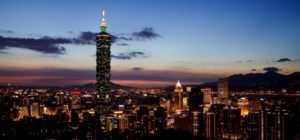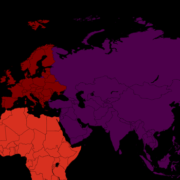The 4 Asian tigers economy growth
The four Asian Tigers, also known as the Asian Dragons, are the fast-growing economies of Singapore, Hong Kong, Taiwan and South Korea. The four Asian nations have consistently sustained high-growth economic rate since the 1960s, charged by rapid industrialization and exports, which facilitated these economies to be in line with the world’s wealthiest nations. In 2015 South Korea officially overtook Japan in GDP terms moving second place to China in terms of financial feasibility.
Emergence of the Four Tiger Governments
The world economy growth began to pick up during the early 1960’s after the World War II and the Korean War in the early 1950’s. Major leaps in air telecommunications and air travel coupled with probable world peace indicated that world countries were opening up their borders and thus the Four Tigers took advantage of this opening. The four countries had viable trade economies, established ports, high literacy levels and advanced infrastructure inherited from their colonial masters.

Singapore is one of the smallest nations but has the highest GDP between the four asian tigers.
Owing to this development, the Asian Tigers took advantage of the situation since they were quite poor in the 1960s; these countries had plenty of inexpensive labor. Combined with educational restructuring, they were smart to leverage this amalgamation into a low-priced, yet industrious labor force. The Asian Dragons devoted to social equality in terms of land reforms, promotion of property rights and welfare of agricultural workers. In a little while, products and services from these nations were in high demand.
A booming stock exchange had already begun in 1891 in Hong Kong; thus it was reasonable when it drifted to financial services from the export market. Hotly followed by Singapore the two tiny nations are currently important global financial centers. During that interval South Korea and Taiwan were propelling the 1980’s -1990’s tech boom, nowadays Taipei and Seoul are leaders in cutting-edge technology and also home to the biggest names in electronics. These advancements happened so quickly hence the nickname ‘The Asian Miracle‘.
The economy growth of the Four Asian nations enabled them to sail through the local 1997 Asian Financial Crisis and also 2008 World Economic Crisis. At present these four nations significantly get enlisted in IMF’s global list of top 40 advanced economies.
Break Down of the Four Tigers
South Korea
During the 1960s, the gross domestic product (GDP) per capita of South Korea was akin with the poorest nations in Africa and Asia. However, in the following four decades, South Korea began shifting from an agricultural economy growth by embracing robotics, software development and electronics. This policy was successful, and as verified by the World Bank, the country’s GDP grew steadily at 10% annually in the year 1962 to 1995 to become an Asian economic powerhouse.
Taiwan

Taiwan is home to the biggest electronic brands.
The proximity of Taiwan to China has provided a leeway for economic growth. Taiwan has prospered in the last forty years regardless of the litigious association with China, and its per capita income exceeds $45,000. Despite not being a United Nations member due to China’s pressure it is still a noteworthy exporter with a GDP of over $ 1.1 trillion, establishing the 23.4 million people nation as an Asian economic giant. Taiwan might not be the richest ‘tiger’; however, it has possibly undergone the most remarkable growth.
Hong Kong
Hong Kong’s economic growth began taking off during the 1950’s, therefore, becoming the first of the of the East Asian countries. Encouraging tax incentives and inexpensive labor allured many large and mid-sized companies to invest in Hong Kong, and the 1970′ and 80’s was a phase of construction, with public housing, skyscrapers and rail user trains being financed by the new-found riches. Hong Kong’s GDP between 1961 to 1997 grew by 180 times making the country one of the richest in the world. A supportive regime, lack of public debt and stringent regulations showcases that the country is placed well for continual growth notwithstanding a less impressive rate.
Singapore
Akin to Hong Kong, Singapore’s booming economy growth is entrenched in the world of business. Initially esteemed for its tactical position in South East Asia and impressive docks, it was effortlessly able to get the most out of on its repute as a trade center. Today, Singapore is now among the world’s leading money exchange centers, and the nation prides itself in exceptionally diverse expat society which pinpoints of the high volumes of overseas investment obtained over the years. Nowadays, Singapore has the highest GDP in all the Four Tigers.
Lessons learnt from the economy growth of the four Asian Tigers
It is debatable that the Four Asian Tigers benefited from being positioned at the correct places and time, World War II had come to an end, imperialism was drawing to a close, and proliferation needed at least one economically strong Asian business center.
On the other hand, without anyone knowing, the ‘miracle’ intensification of these four countries was principally attributed to excellent governance. Each one of the four nations has placed firm directives and anti-corruption measures, while conventional economic arrangements have permitted each country to stay away from public debt and increase large reserves of savings and capital. These actions preordained that, when predicament hit, they only had a minimal effect, and recovered immediately as soon as the markets did well again.

Hongkong is considered to be the first of the “four Asian Tigers”.
Also, the benefaction of China was a hugely significant factor in four nations. China has gone through an outstanding economic revolution over the past five decades, and the Four East Asian Tigers have been able to take advantage from this via the Chinese investment while being ambitious to make paths of their own.
It is apparent that the economy growth of a nation relies on its economic guidelines and the facilitation of an export-leaning trade. The Four Asian governments benefited from these strategies and institution of free trade hence is no shocker that the four countries now have the urbanized state status.
The Asian economic crisis of 1997 had an effect on all the Four Asian Tigers. The worst hit was South Korea who relied on external loans as it affected its currency when it fell to as low as 50%. Losses in South Korea, Hong Kong and Singapore were as low as 60% in terms of dollars. The four nations however recovered from this calamity more quickly than usual.
In 2013, the joint economy of the Four East Asian Tigers added up to 3.81% of the global economy with a totality Gross Domestic Product (GDP) of 2,366 billion US dollars. Together, their combined economy is close to the GDP of United Kingdom’s 4.07% of the global economy.
The rapid economic escalation of the four Asian nations has often been nicknamed as the “Asian miracle”. The basis of this Asian miracle was the institution of a certain macroeconomic setting. Each country among the four coped with the three variables of the financial system in budget deficits, exchange rates and external debt to various levels of accomplishment. The Four Asian Tiger’s financial plan arrears were kept to near to the ground limits in that it could not interfere with the macro economy. External debts were also not in existence excluding South Korea whose high borrowing levels were canceled by elevated exportation.
The four Asian nations are currently well placed in the global economic rankings, and on condition that they remain on persisting on what they have always endeavored to there is every reason to consider that they will continue to be economically stable for a long time.



